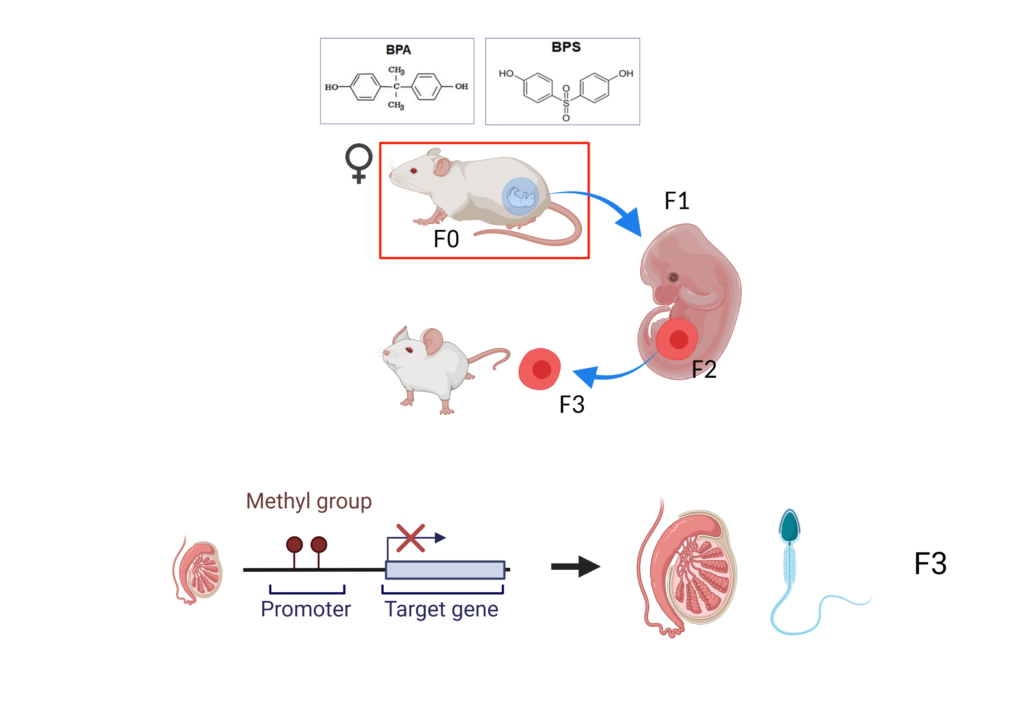Endometriosis:
Endometriosis is a common gynecological disorder, which causes debilitating chronic pelvic pain and subfertility in women of reproductive age. Because it is an estrogen-dependent disorder, hormonal therapies are available for the medical treatment of endometriosis including oral contraceptives, GnRH-agonists and progestins in order to inhibit estrogen production and function. However, these hormonal treatments along with laparoscopic surgery are often of limited efficacy with high recurrence rates, frequent side effects, additional costs, and potential morbidity. Thus, a critical need exists to develop new and effective therapies for endometriosis targeting biologically important mechanisms that underlie the pathophysiology of this disease. We are currently developing new therapies for endometriosis patients. Specifically, we are investigating whether niclosamide could be a new innovative therapy to improve the health outcomes of patients with endometriosis through the inhibition of inflammatory mechanisms.
Efficacy of niclosamide on the intra-abdominal inflammatory environment in endometriosis

Published in FASEB J 2021
Created with BioRender.com
Niclosamide targets macrophages to rescue the disrupted peritoneal homeostasis in endometriosis

scRNA-seq analysis of immune cells in the peritoneal fluid of female mice
Created with BioRender.com
Reproductive Toxicology:
Following extensive work examining the adverse effects of bisphenol A (BPA) as an endocrine-disrupting chemical, the usage of BPA has been restricted and/or banned in certain products such as baby bottles and sippy cups in Canada, the European Union and the US. As the result of restrictions on the use of BPA, a structurally similar analogue, BPS has become one of the major substitutes for BPA. BPS is found in numerous daily consumer products including toys, baby bottles, personal care products, canned foods and paper products. Furthermore, BPS is the main analogue used to replace BPA in thermal papers. BPS levels in water, sediment, sludge and indoor dust have been continuously increasing and have already reached comparable or equal levels of BPA. BPS is detected in human urine, and its levels have been increasing in the US and are already higher than those of BPA in some other countries. However, it is still unclear how much of our toxicological understanding of BPA is also applicable to BPS. We focus on transgenerational effects of BPS on male and female germ cell development and reproductive functions.
Prenatal Exposure to Bisphenol A, E, and S Induces Transgenerational Effects on Male Reproductive Functions in Mice


Published in Tox Sci 2019 Tox Spotlight article, Tox Sci 2018, Tox Sci in 2019, Tox Sci 2019, Reprod Toxicol 2017. Created with BioRender.com
Cannabis:
Cannabis is considered the most widely used psychoactive drug in the United States and all over the world. In 2020, the National Survey on Drug Use and Health (NSDUH) has reported that over 48 million Americans (~16% of the population) ages 12 and older used cannabis in the past year. This number has increased due to the expanding legalization of cannabis consumption in the US. Higher potency strains of cannabis plants have emerged over the past two decades. Indeed average concentration of Δ9-tetrahydrocannabinol (THC), a primary psychoactive compound in cannabis, has increased from 9% to 17% past 10 years, and the ratio of THC and cannabidiol (CBD, a non or less-psychoactive compound) also has risen substantially from 23 in 2008 and to 104 in 2017. Unsurprisingly, adverse health outcomes associated with cannabis consumption have also been increasing. It is thus urgent to understand the effects of cannabis on human health. Although cannabis is known to induce psychoactive effects, its effects on reproduction are not well established.
Vapor Cannabis Exposure Generationally Affects Male Reproductive Functions in Mice

Published in ToxSci 2021.
Ovarian Cancer:
Ovarian cancer is the most lethal gynecological malignancy. The high mortality related to ovarian cancer is primarily due to the advanced stage of the disease at presentation and the inherent limitations of current therapeutic options. The majority of patients, who initially respond well to chemotherapy, eventually recur and die from chemoresistant disease. Therefore, a critical need exists to characterize therapeutic mechanisms and develop new effective therapies(s), ultimately leading to better treatment plans that will give patients the chance for improvements in overall survival. We have built on our finding that WNT/β-catenin signaling is one of the key mechanisms of ovarian cancer development which can be targeted by niclosamide treatment. Now, we are expanding the studies on niclosamide’s direct binding targets, RNA binding proteins and their oncogenic activities, as well as their regulatory mechanisms and target mRNAs in ovarian cancer.
Published in Biol Reprod 2021, Oncogene 2015 and Mol Cancer Res 2012 etc.